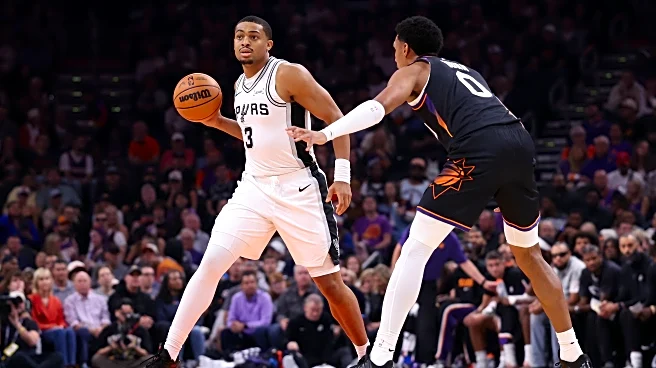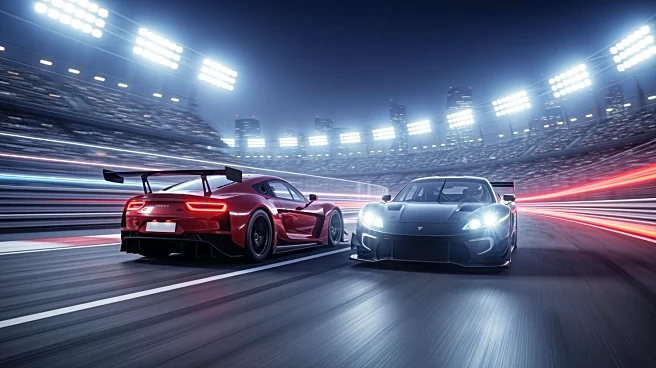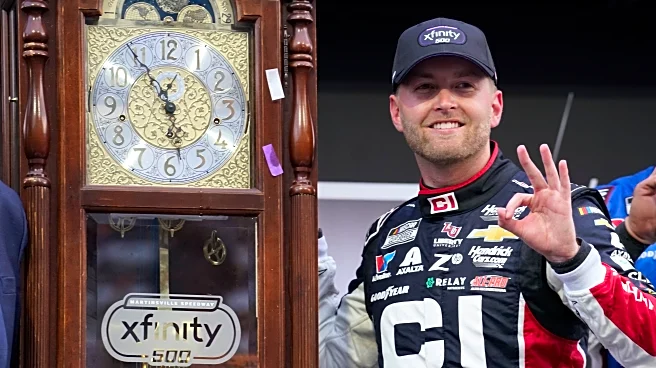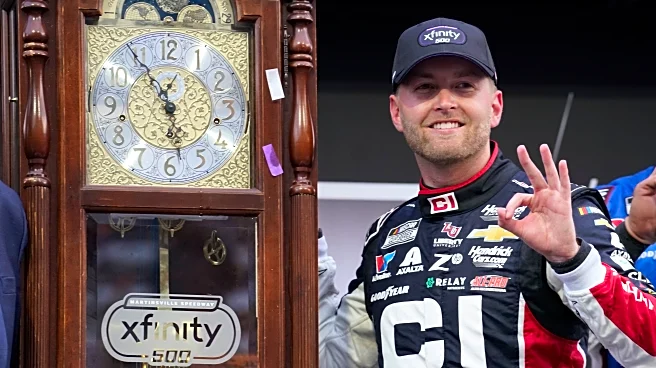What's Happening?
Kyle Larson secured the 2025 NASCAR Cup Series title at Phoenix Raceway, despite not leading a single lap during the race. Larson capitalized on a late caution when his teammate William Byron experienced a tire blowout, allowing him to pit for two tires
and restart ahead of Denny Hamlin, who had led 208 of the 312 laps. Larson finished third, while Hamlin ended in sixth place. This victory marks Larson's second Cup title, joining the ranks of 18 drivers who have won multiple championships. The race was marked by tire issues affecting all four championship contenders, with Byron's crash and Chase Briscoe's tire problems impacting their chances. Ryan Blaney, who was not in the championship contention, won the race, adding to the dramatic conclusion of the season.
Why It's Important?
Larson's victory highlights the unpredictable nature of motorsports, where strategic decisions and timely opportunities can outweigh consistent performance. The outcome underscores the significance of pit stop strategies and tire management in racing. For Denny Hamlin, the result is a continuation of his championship round struggles, having failed to secure a title despite multiple qualifications. The race also emphasizes the risks teams take with tire pressures for competitive speed, which can lead to critical failures. The broader impact on NASCAR includes potential changes to race formats and strategies as teams adapt to evolving conditions and regulations.
What's Next?
The NASCAR offseason will provide teams and drivers, particularly Denny Hamlin, a chance to regroup and strategize for the upcoming season. When NASCAR returns to Phoenix in March, it will feature a new 750 horsepower package, promising changes in race dynamics. The event will also include a doubleheader with INDYCAR racing, indicating a shift towards more integrated racing weekends. Teams will likely reassess their tire strategies and pit stop tactics to mitigate risks observed in the championship race.
Beyond the Headlines
The race's outcome may influence NASCAR's approach to race formats and regulations, particularly concerning tire management and pit stop strategies. The introduction of new horsepower packages could alter competitive dynamics, requiring teams to adapt their vehicles and strategies. The integration of INDYCAR racing with NASCAR events may signal a broader trend towards collaborative motorsport events, potentially attracting diverse audiences and enhancing the sport's appeal.















